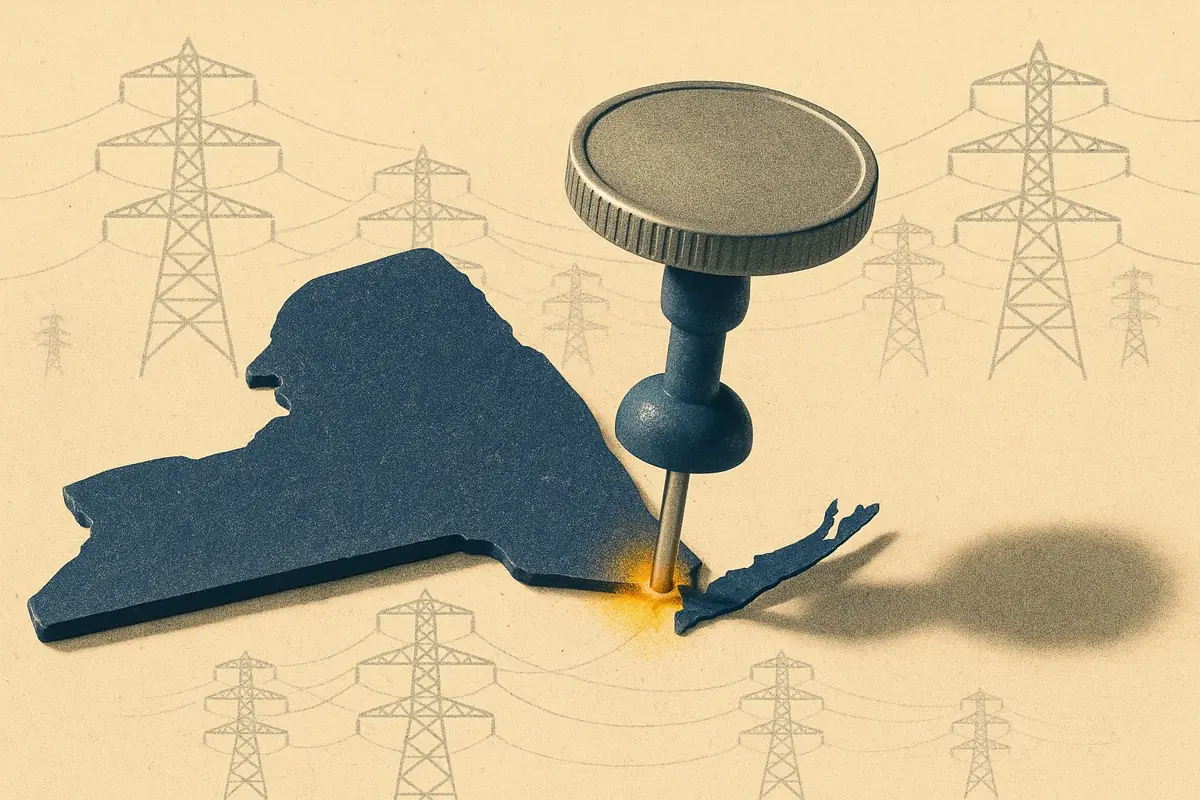So far in 2023, carbon emissions from Great Britain’s power sector have fallen to their lowest-ever levels. April even set a new record low for half-hourly carbon intensity: just 33 gCO2/kWh.
But how much is battery energy storage contributing to lower carbon emissions?
What are the headlines?

Battery energy storage has lowered GB power sector emissions by over 1% since 2021

Frequency Response is responsible for almost all of this benefit

Dynamic Containment is (by far) the most carbon-beneficial action that batteries currently take

The methodology
How do we measure carbon emissions from the power sector?
Carbon intensity is a measure of the carbon emissions from power generation. It is measured in gCO2/kWh. Essentially, for every kWh of electricity generated, what were the associated carbon emissions?
The carbon intensity of a given technology depends on several factors - e.g. fuel, and efficiency.

National Grid ESO calculates and publishes half-hourly grid carbon intensity - you can see the data here.
How can battery energy storage reduce carbon emissions?
Battery energy storage can reduce the carbon emissions of the grid through two ways:
- Direct changes in emissions - as a result of the energy imported from or exported to the grid.
- Indirect impacts - as a result of providing grid services (such as frequency response).
But how do we quantify these?
Carbon benefit of direct energy actions
Whenever batteries import from or export to the grid, there is a resultant change in the net load of the system. This has a corresponding carbon impact.
Grid-scale battery energy storage will tend to import or export for one of three reasons:
- Energy arbitrage actions in response to prices.
- Balancing Mechanism actions in response to dispatches from National Grid ESO.
- Grid services - e.g. discharging following a fall in grid frequency.
By multiplying these import and export volumes by carbon intensity in each half-hour, we can work out their carbon impact.

- Following the launch of Dynamic Regulation, the energy actions of batteries have actually contributed 8,000 tonnes of emissions.
- Overall, however, this number is negligible - the power sector was responsible for 123 million tonnes of CO2 emissions across the same period!
Essentially, the energy actions of battery energy storage do not reduce the carbon intensity of the grid. So, how exactly are batteries bringing down emissions?
Carbon benefit of grid services
Batteries spend most of their time contracted to deliver different frequency response services. There are four main frequency response services that batteries provide:
- Dynamic Containment - a very fast-acting, post-fault service.
- Dynamic Moderation - a very fast-acting, pre-fault service.
- Dynamic Regulation - a fast-acting, pre-fault service.
- Firm Frequency Response - a slower-acting, pre- and post-fault service.
These services do result in batteries charging and discharging from the grid (as covered above). However, their main benefit is that they allow National Grid ESO to run the system safely and securely - while reducing emissions.
So, what is the carbon benefit of battery storage delivering these services? We can work this out by looking at the actions that would have been taken without them.
Mandatory Frequency Response
The power system needs frequency response to keep system frequency stable. When National Grid ESO can’t procure the level it needs from those four services mentioned above, its control room turns to Mandatory Frequency Response.
CCGTs provide the bulk of Mandatory Frequency Response. Because of this, the average carbon intensity of systems delivering the service was 391 gCO2/kWh between April 2022 and March 2023.

This service is slower than the three new Dynamic frequency response services - therefore, it’s less efficient in providing the same response. This means more megawatts are needed to have the same effect. For example, low-frequency Dynamic Containment can require up to three times the volume of Mandatory Frequency Response to replace it.

Avoided MFR operational emissions
Symmetry in high-frequency response and low-frequency response should mean that the carbon impacts of Mandatory Frequency Response even out. However, until recently, National Grid ESO has massively prioritized low-frequency response - particularly in Dynamic Containment.
Using Mandatory Frequency response instead of Dynamic low-frequency response results in increased carbon emissions - and so, by providing Dynamic low-frequency response, batteries reduce emissions. Since 2021, this has saved around 480,000 tonnes of CO2 emissions.

Improved system efficiency
Another consequence of Mandatory Frequency Response is a reduction in overall system efficiency. Often, plants delivering the service have to be repositioned to ensure adequate room for service delivery. CCGTs like to run at full power to achieve optimal efficiency output - but to deliver Mandatory Frequency Response, they are often moved to a lower set-point.

To balance energy in the system, another plant must increase its generation to compensate (often a less efficient CCGT). This results in an overall reduction in efficiency across these two plants - and a subsequent increase in the carbon intensity of the two sites.
This impact can seem minimal - as little as a 0.5% increase in carbon intensity across the two plants. However, this increase applies to the entire output of the two plants, not just the instructed Mandatory Frequency Response volume. This results in more carbon emissions.

This isn’t all. Mandatory Frequency Response sometimes results in even worse outcomes - such as wind being turned down. The carbon impacts from these actions would be far higher still.
On average, one MWh of Mandatory Frequency Response means a 4% increase in the carbon intensity of the equivalent generation volume.
Since 2021, this equates to 637,000 tonnes of avoided CO2 emissions.
Avoided inertia management actions
Inertia is a physical characteristic of power systems that slows the rate at which grid frequency changes. It is provided mostly as a byproduct of large, heavy generators being synchronized with grid frequency. National Grid ESO has to maintain a minimum level of inertia on the grid to ensure system stability.
Grid inertia provided by the market can sometimes fall below this point. The control room then has to turn down wind or interconnectors (which do not provide inertia) and turn up CCGTs to compensate - this has the effect of increasing grid emissions.
The system has seen a reduction in both average inertia and minimum required inertia. The launch of Dynamic Containment and the Accelerated Loss of Mains Change Programme has made the system more secure even at lower inertia levels. The system has seen a reduction in both average inertia and minimum required inertia.
It should be noted that system inertia data published by National Grid ESO is only an estimate and may not be representative of actual system inertia at the time.

How has this benefited carbon emissions?
When the ESO needs inertia, it tends to turn to CCGTs in the Balancing Mechanism. Wind often gets turned down.

Dynamic Containment allows the system to run with lower inertia levels. This means the ESO is less likely to rely on CCGTs to manage drop-offs in inertia.

This has resulted in around 174,000 tonnes of avoided CO2 emissions since 2021.
Uncertainty ranges in these numbers
Modeling avoided emissions from battery energy storage is tricky - and certain assumptions need to be made.
Overall, the numbers in this article are actually a fairly conservative estimate.

How might the carbon benefit from the battery fleet improve in the future?
On top of the carbon benefits outlined above, there are additional ways in which battery energy storage can reduce carbon emissions. These are likely to become more prominent in the future.
- Reducing curtailment of wind and solar. This is currently negligible, but could potentially provide a significant carbon benefit - especially with new storage coming online in constrained regions. You can read more about this here.
- Replacing fossil fuel generators in reserve services. Reserve is delivered almost entirely by generators with high carbon intensity. With new reserve products coming, can battery storage start to offset some of this? You can read about Quick and Slow Reserve here, and Balancing Reserve here.
- Capacity Market -preventing the construction of new fossil fuel generation. With 1.3 GW of de-rated battery storage capacity winning contracts in the latest T-4 (see here), are we starting to see this happen?







